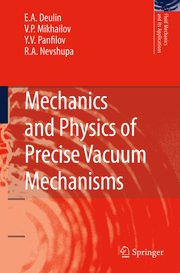Detailansicht
Mechanics and physics of precise vacuum mechanisms
Fluid Mechanics and Its Applications 91
Deulin, E A/Mikhailov, V P/Panfilov, Yu V et al
ISBN/EAN: 9789048125197
Umbreit-Nr.: 1939659
Sprache:
Englisch
Umfang: xiv, 234 S.
Format in cm:
Einband:
gebundenes Buch
Erschienen am 15.12.2009
Auflage: 1/2009
€ 160,49
(inklusive MwSt.)
Nachfragen
